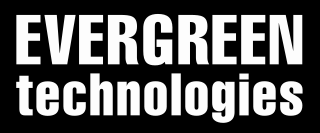
The Intel 486, officially named i486 and also known as 80486, is a microprocessor. It is a higher-performance follow-up to the Intel 386. The i486 was introduced in 1989. It represents the fourth generation of binary compatible CPUs following the 8086 of 1978, the Intel 80286 of 1982, and 1985's i386.
Packard Bell Electronics, Inc. was an American computer company independently active from 1986 to 1996, now a Dutch-registered computer manufacturing brand and subsidiary of Acer Inc. The company was founded in 1986, after Israeli-American investors bought the trademark rights to the Packard Bell Corporation from Teledyne.

Orchid Technology was a privately held company founded by Le Nhon Bui in 1982.

The LTE is a line of notebook-sized laptops manufactured by Compaq Computer Corporation, introduced in 1989 and discontinued in 1997. It was the first notebook computer sold by Compaq and the first commercially successful notebook that was compatible with the IBM PC.

Irwin Magnetic Systems, Inc., also known as Irwin Magnetics, was a computer storage manufacturer active from 1979 to 1989 and based in Ann Arbor, Michigan. It was founded by Samuel Irwin in 1979 as Irwin International, Inc. The company's primary export was magnetic tape data storage and backup systems for personal computers. Irwin was one of the first companies to manufacture quarter-inch cartridge (QIC) systems for the personal computer market. In 1989, the company was acquired by Cipher Data Products.

Mylex Corporation was an American computer company active from 1983 to 1999. The company mainly produced peripherals and expansion cards for personal computers—chiefly the IBM Personal Computer—for the bulk of its existence, although it also produced complete motherboards. In the mid-1990s the company focused on designing and manufacturing RAID controllers, eventually cornering 75 percent of the RAID controller market. In 1999, the company was acquired by and made a subsidiary of IBM for approximately $240 million. In 2002, IBM sold their Mylex division to LSI Logic for an undisclosed amount.

Reply Corporation, often shortened to Reply Corp., was an American computer company based in San Jose, California. Founded in 1988 by Steve Petracca, the company licensed the Micro Channel architecture from IBM for their own computers released in 1989, competing against IBM's PS/2 line. The company later divested from offering complete systems in favor of marketing motherboard upgrades for older PS/2s. Reply enjoyed a close relationship with IBM, owing to many of its founding employees, including Petracca, having worked for IBM. The company was acquired by Radius in 1997.

Canon Computer Systems, Inc. (CCSI), sometimes shortened to Canon Computer, was an American subsidiary of Canon Inc. formed in 1992 to develop and market the parent company's personal computers and workstations. The subsidiary also assumed the responsibility of marketing Canon's printers and photocopiers, which were formerly sold by other Canon divisions. It went defunct in January 2001.

DTK Computer is the name for international branches of Datatech Enterprises, a Taiwanese computer manufacturer. Founded in 1981, the company was an early supplier of peripherals for IBM PCs as well as PC compatible motherboards. In the late 1980s, the company switched to developing complete systems under the DTK name as well as serving as an OEM for motherboards and cases, as bought by other small computer companies and systems integrators.

Advanced Logic Research, Inc. (ALR), was an American computer company founded in 1984 in Irvine, California by Gene Lu. The company marketed IBM PC compatibles across that standard's evolution until 1997 when it was acquired by Gateway 2000.

CMS Enhancements Inc. was an American computer company headquartered in Irvine, California. Founded in 1983, the company's main product lines in the 1980s were internal and external hard drives and tape drives. The company's hard drives were chiefly sourced from Seagate and reconfigured in bespoke configurations for certain computing platforms, such as the Macintosh, the IBM PC, and the Compaq Deskpro, among others.

Aox Inc. was a privately run American technology corporation founded by Michael and Linda Aronson in 1978. Over the course of its 22-year lifespan, the company chiefly developed software and hardware for IBM's PC and compatibles, for the Personal System/2, and for the Macintosh. In its twilight years, the company designed multimedia and teleconferencing devices and chip designs. Aox was founded after Michael Aronson graduated from Harvard University with a doctorate in physics; he stayed with the company until 2000, when he incorporated EndPoints Inc. and switched to full-time fabless semiconductor design.

Cumulus Corporation was an American computer peripheral and system manufacturer active from 1987 to 1993. Based in Beachwood, Ohio and started by Tecmar founder Martin Alpert, the company set out to exclusively manufacture expansion products for IBM's Personal System/2 (PS/2) family of computers—mainly RAM expansion cards. It later released cross-platform CPU upgrade cards and memory expansion cards for other platforms besides the PS/2. Beginning in 1990, the company began trading as Cumulus Computer Corporation and began releasing complete systems of their own. Initially a success story for the tech industry in Cleveland, a botched stock launch in 1992 proved disastrous for the company's ailing cash flow situation, and in 1993 the company was liquidated amid massive debt to suppliers and lenders.

Informer Computer Terminals, Inc., originally Informer, Inc., and later Informer Computer Systems, Inc., was a privately held American computer company active from 1971 to 2007. It manufactured data terminals that could communicate with mainframes and minicomputers, mainly those manufactured by IBM and Digital. It was originally based in Los Angeles, California; in the early 1980s, it moved to Laguna Beach, and in the late 1980s, to Garden Grove.

Paradise Systems, Inc., was an American video controller and graphics adapter card manufacturer active from 1982 to 1996. The company became a subsidiary of Western Digital when they purchased Paradise in 1986; in 1995, they sold the division to Philips, who subsequently folded it after less than a year.

BusLogic, Inc., was an American computer company active from 1988 to 1996. It specialized in the production of Small Computer System Interface (SCSI) device controller chips and controller expansion cards, becoming a dominant player in that market, behind only Adaptec. In 1996, the company was acquired by Mylex Corporation.
Video Seven, Inc., also typeset as Video-7, later Headland Technology, Inc., was a public American computer hardware company independently active from 1984 to 1989. The company manufactured expansion cards for personal computers, mainly graphics cards for the IBM PC through their Vega brand. It was founded by Paul Jain as his second venture in the graphics card market; after his departure in 1990, he founded Media Vision. Video Seven delivered both the first graphics card compatible with IBM's Enhanced Graphics Adapter (EGA), in 1985, and one of the first cards compatible with IBM's Video Graphics Array (VGA) standard, in 1987. In 1989, Video Seven merged with G-2 Inc., a subsidiary of LSI Logic Corporation, becoming Headland Technology.

Evergreen Technologies, Inc., was a privately owned computer company active from 1989 to 2005 that manufactured a wide variety CPU upgrade chips for x86-based personal computers. Based in Corvallis, Oregon, the company enjoyed a heyday in the 1990s, becoming a market leader in the CPU upgrade segment.
Parallan Computer, Inc., was an American computer company active from 1986 to 1999 and based in Mountain View, California. The company was best known for their line of servers and collaborations with IBM for the latter's PS/2 Server range. In 1994, the company merged with Meridian Data, Inc., assuming the latter's name and marketing CD-ROM servers before moving into the network-attached storage (NAS) market with the Snap! Server. In 1999, Quantum Corporation acquired Meridian Data for $85 million.

Colorado Memory Systems, Inc. (CMS), was an American technology company independently active from 1985 to 1992 and based in Loveland, Colorado. The company primarily manufactured tape drive systems, especially those using quarter-inch cartridges (QIC)s, for personal computers and workstations. Colorado Memory Systems was founded by Bill Beierwaltes as an offshoot of his previous company, Colorado Time Systems, also based in Loveland. It was acquired by Hewlett-Packard in 1992.

















